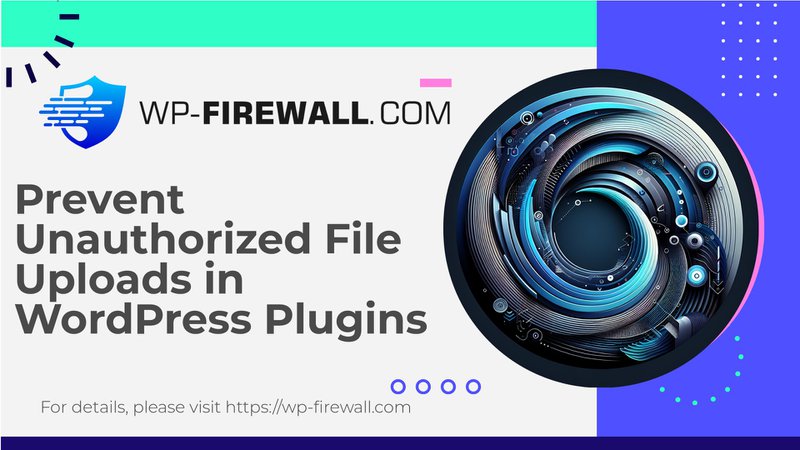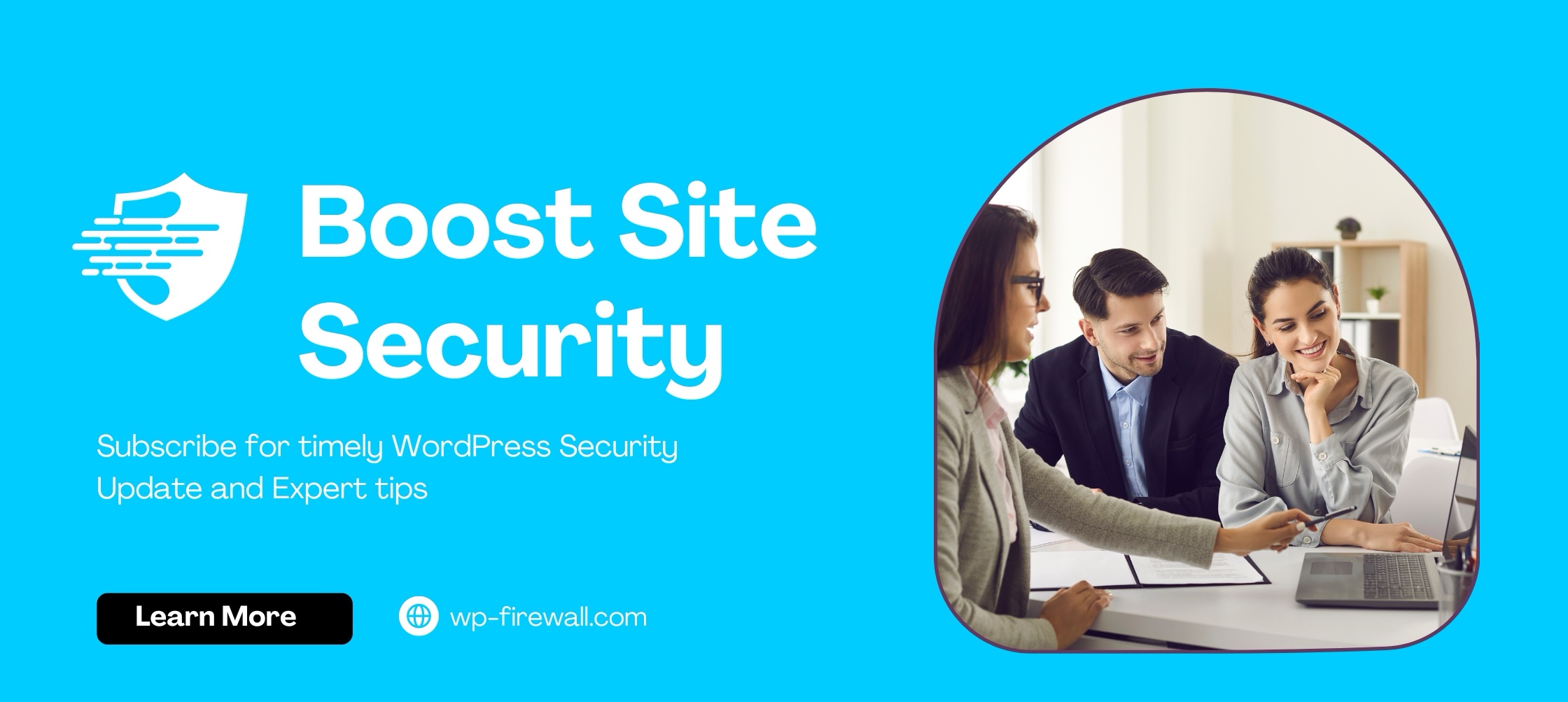
WordPress powers more than 40% of all websites on the internet, and its extensibility through plugins makes it a popular choice for site owners. However, plugins can introduce serious SECURITY RISKS when they inadvertently expose critical functionality without proper validation or access control.
On May 8, 2025, a high-severity vulnerability (CVE-2024-11617) was disclosed in the Envolve Plugin versions 1.0 and below: an UNAUTHENTICATED ARBITRARY FILE UPLOAD via language_file and fonts_file endpoints. With a CVSS score of 10, this weakness deserves immediate attention from every WordPress administrator and developer.
In this in-depth article, we’ll explore:
- The NATURE of ARBITRARY FILE UPLOAD vulnerabilities.
- How the Envolve Plugin flaw works in practice.
- The REAL-WORLD IMPACT on your website.
- Recommended MITIGATION STEPS—including updating to version 1.1.0.
- How a specialized WordPress Web Application Firewall (WAF) like WP-Firewall can BLOCK the attack instantly.
- BEST PRACTICES for ongoing WordPress SECURITY.
Let’s dive in.
1.1 What Is Arbitrary File Upload?
An ARBITRARY FILE UPLOAD vulnerability allows an attacker to upload files of any type to your web server, bypassing the normal SECURITY CHECKS. In a WordPress context, this can result in:
- Uploading a PHP BACKDOOR or WEB SHELL.
- Modifying existing files.
- Defacing your site.
- Using your server as a PIVOT POINT to launch further attacks.
Once a malicious file is on your server, the attacker can EXECUTE CODE, STEAL DATA, or compromise other components of your infrastructure.
1.2 Why Authentication and File Validation Matter
Two critical defenses against arbitrary uploads are:
- Authentication: Ensuring only AUTHORIZED USERS (e.g., administrators) can upload files.
- File validation: Checking FILE NAME, EXTENSION, MIME TYPE, and CONTENT.
Without these checks, endpoints that handle file uploads can become direct pathways for compromise.
2.1 Vulnerability Details
- Plugin: Envolve Plugin
- Vulnerable versions: ≤ 1.0
- Type: Unauthenticated Arbitrary File Upload
- Endpoints affected:
/wp-admin/admin-ajax.php?action=language_file
/wp-admin/admin-ajax.php?action=fonts_file - Exploit: No authentication or file-type restrictions.
- CVSS score: 10 (Critical)
- Fixed in: 1.1.0
- Published: 08 May, 2025
2.2 How It Works
- Unauthenticated access: The plugin exposes two AJAX actions—
language_fileandfonts_file—that accept file uploads throughadmin-ajax.phpwithout requiring any user login. - Lack of validation: Neither action validates file extension, MIME type, or content. An attacker can upload
.php,.phtml, or any other EXECUTABLE SCRIPT. - Arbitrary placement: Uploaded files are stored in a PUBLICLY ACCESSIBLE DIRECTORY, allowing the attacker to execute them by browsing to their URL.
2.3 Proof of Concept (Simplified)
# Upload a PHP web shell
curl -X POST
-F '[email protected]'
https://example.com/wp-admin/admin-ajax.php?action=language_file
# Access the uploaded shell
curl https://example.com/wp-content/uploads/envolve/language/webshell.php?cmd=idAfter uploading, the attacker can EXECUTE ARBITRARY COMMANDS (e.g., whoami, ls, etc.) on your server.
3.1 Site Owner Perspective
- Complete site takeover: With SHELL ACCESS, attackers can modify content, create admin users, or install malware.
- Data breach: Sensitive customer or user data stored in your database can be EXFILTRATED.
- Resource abuse: Your server may be used for PHISHING, SPAM, or PROXYING ATTACKS.
- Reputation damage: Visitors see DEFACEMENT or malicious content, eroding trust.
3.2 Developer / Agency Perspective
- Business liability: You could face CONTRACTUAL or LEGAL consequences for compromised client sites.
- Support overhead: Incident response, cleanup, and restoring backups take time and resources.
- Ongoing security debt: Failing to implement robust SECURITY PRACTICES invites repeated incidents.
4.1 Identifying Suspicious Traffic
Anomalies related to this vulnerability include:
- POST requests to
admin-ajax.phpwithaction=language_fileoraction=fonts_file. - Requests uploading
.phpor other EXECUTABLE FILES. - Unexpected spikes in traffic to
/wp-content/uploads/.
Use your server logs or a logging plugin to flag:
[DATE] "POST /wp-admin/admin-ajax.php?action=language_file HTTP/1.1" 200
[DATE] "GET /wp-content/uploads/envolve/fonts/shell.php HTTP/1.1" 2004.2 Exploitation Indicators
- New files in upload folders with SUSPICIOUS NAMES.
- Unexpected file modifications around the time of the exploit.
- Unknown administrator accounts or user roles.
5.1 Update Envolve Plugin
The SINGLE MOST IMPORTANT ACTION is to update the Envolve Plugin to VERSION 1.1.0 or later. This version:
- Introduces AUTHENTICATION CHECKS.
- Validates FILE EXTENSIONS and MIME TYPES.
- Restricts the UPLOAD PATH and FILE OPERATIONS.
Always test updates on a STAGING ENVIRONMENT before rolling out to PRODUCTION.
5.2 Harden Your File System
- File permissions: Ensure
wp-content/uploadsis not writable by the web server, except where necessary. - Disable PHP execution: Add a
.htaccess(Apache) ornginxrule to prevent PHP in upload folders:Apache:Deny from allNginx:location ~* /wp-content/uploads/.*.php$ {
deny all;
}
5.3 Review Logs and Clean Up
- Scan your upload directories for unexpected
.php,.phtml, or.shtmlfiles. - Remove any SUSPICIOUS FILES and audit database entries for malicious content.
- Rotate all ADMINISTRATIVE PASSWORDS.
Updating and hardening are vital, but exploits are AUTOMATED and can strike within MINUTES of public disclosure. A dedicated WordPress Web Application Firewall (WAF) offers an EXTRA LAYER:
- Virtual patching: Immediately BLOCK known vulnerability patterns (e.g., malicious AJAX requests) without waiting for plugin updates.
- Rule sets for OWASP Top 10: Comprehensive protection against FILE UPLOAD, SQL INJECTION, and other common threats.
- Managed firewall: Continuous updates to THREAT SIGNATURES and rules tailored to WordPress.
- Zero-day defense: BLOCK new attacks proactively, including those targeting minor or custom plugins.
With WP-Firewall in place, the exploit requests to language_file or fonts_file would be INTERCEPTED and DROPPED before they reach PHP.
7.1 Virtual Patching Explained
Virtual patching, or RUNTIME APPLICATION SHIELDING, isolates vulnerable code paths and BLOCKS malicious input at the WAF layer. Even if a plugin remains UNPATCHED, attackers cannot exploit known WEAKNESSES.
Benefits
- Instant protection: No waiting for official patches.
- Minimal performance impact: Rules execute at the EDGE or within optimized modules.
- Flexibility: Customize or DISABLE rules per site needs.
7.2 Continuous Malware Scanning
Regular scanning of FILE SYSTEM and DATABASE complements PATCHING:
- Identify BACKDOORS or malicious code injected before updates.
- Schedule AUTOMATED SCANS and receive alerts on ANOMALIES.
- Optionally enable AUTO-REMOVAL for known malware signatures.
8.1 Keep WordPress Core, Plugins, and Themes Updated
The more you DELAY, the higher the risk of automated SCANNERS finding and exploiting vulnerabilities.
8.2 Principle of Least Privilege
- Limit ADMINISTRATIVE ACCOUNTS.
- Only install PLUGINS and THEMES from trusted sources.
- Remove UNUSED PLUGINS and THEMES.
8.3 Secure Configuration
- Enforce STRONG PASSWORDS and TWO-FACTOR AUTHENTICATION for administrators.
- Disable FILE EDITING via
wp-config.php:define('DISALLOW_FILE_EDIT', true); - Restrict access to SENSITIVE FILES (e.g.,
wp-config.php,.htaccess) through server rules.
8.4 Regular Backups
In the event of COMPROMISE, a recent backup reduces DOWNTIME and DATA LOSS. Store backups OFF-SITE and test RESTORATION procedures.
8.5 Monitoring and Alerting
- Enable REAL-TIME MONITORING of HTTP requests and file changes.
- Configure ALERTS for anomalous activities (e.g., sudden file uploads).
Protecting your site against critical threats like CVE-2024-11617 should not wait. Get started with WP-Firewall’s FREE PLAN today—no credit card required—to add an IMMEDIATE LAYER of DEFENSE:
- Essential protection: MANAGED FIREWALL, UNLIMITED BANDWIDTH, WAF, MALWARE SCANNER.
- Mitigation of OWASP Top 10 RISKS out of the box.
- Easy setup in MINUTES.
Sign up now at:
https://my.wp-firewall.com/buy/wp-firewall-free-plan/
The Envolve Plugin arbitrary file upload vulnerability underscores a universal truth: any plugin, no matter its POPULARITY, can introduce CRITICAL RISKS if SECURITY is overlooked. By updating to version 1.1.0, hardening your server, and deploying a specialized WordPress WAF like WP-Firewall, you can STAY AHEAD of automated attacks and prevent SITE COMPROMISES.
SECURITY is not a one-time task, but an ongoing process. Combine PROACTIVE DEFENSES—virtual patching, malware scanning, least privilege, and continuous monitoring—to ensure your WordPress site remains RESILIENT against emerging threats.
Stay secure, and keep your WordPress site PROTECTED at every layer!

